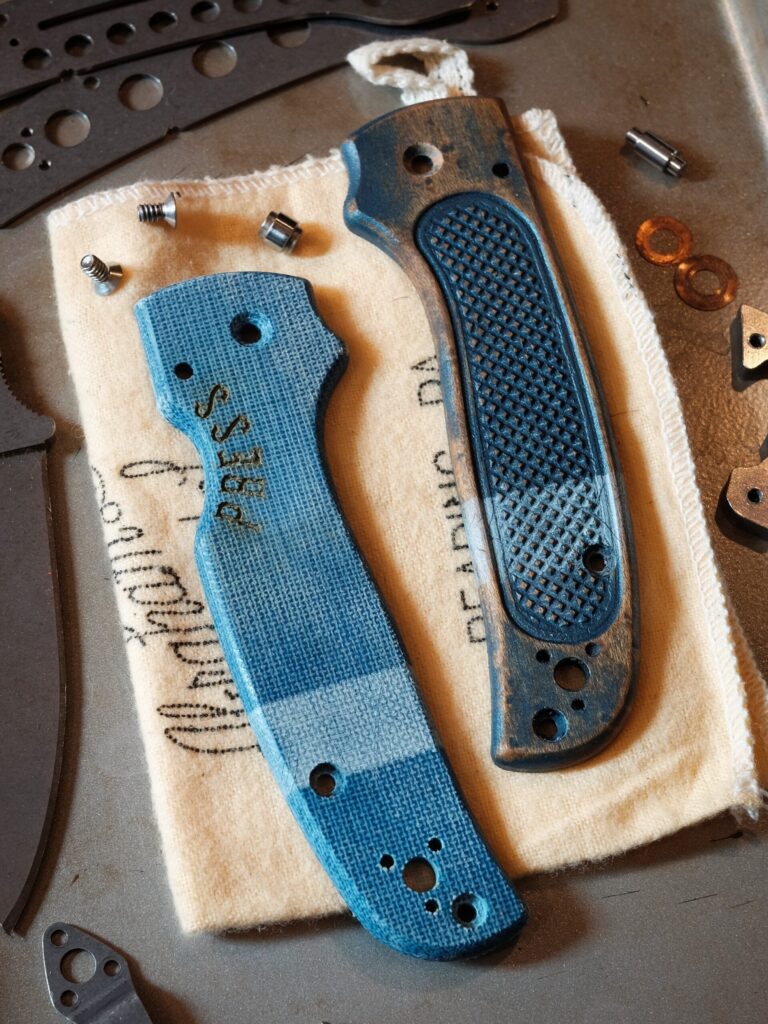PLEASE NOTE:
In the past we opted for a very snug fit on pocketed liner knives (PM2, Para 3, Yojimbo, etc.) but we’ve since learned that leaving some tolerance is very helpful for the long haul. Temperatures change, materials expand and contract, various versions of the same knife get released over the years and companies’ tolerances change, etc. This also helps the majority of people during installation by allowing a little wiggle room when adjusting the action. We mill our scales so that the liners on the majority of models sit flush or a few thousandths proud for the best operation and appearance. In extremely rare cases, yours may not (it’s older, has been heavily stonewashed, is a limited release, it’s slightly out of spec, etc.) If this is the case, please let us know.
SCALE INSTALLATION:
Set aside some time, use the proper tools, and be patient for best results. Take care to install scales evenly and do not overtighten the screws. We recommend a low strength thread sealer for final assembly and some form of pivot lube. For pocketed scales or scales with lanyard tubes, we typically leave the holes slightly proud for a snug fit (so that a flaring tool won’t be necessary for a solid fit). Assemble each side and evenly clamp (a vise is best) or tap with a mallet to seat the tube. We leave slightly greater openings on our wood scales to prevent chipping, allow for finish, and/or changes in humidity, etc., but please take special care when installing them.
DOMINO & DICE:The locating pins used on the stock scales do not transfer over. They usually stick to the stock scale, but make sure they’re not attached to the liner when you install our scale.
BLADE CENTERING & ACTION:
Some knives are like butter and perfectly centered out of the box, some are not. Stock liners can have burrs, liners can bend and/or twist when they’re removed, etc. If you spend some time tinkering, you will have as good, if not better action when you reassembly your knife. After you’ve gotten the knife reassembled, apply pressure near the stop pin (Para 3, Shaman, etc.) to make sure it’s seated, then tighten the pivot down all the way to make sure it seats. You can then back off the pivot screws for desired action and centering, but make sure they’re not loose. Knives like the PM2 and Para3 may require you to back off on the screw closest to the tube, flex/bend the handle (with the blade out of the way) and re-tighten. Repeat the above until the blade is as close to center as possible. If you have ANY trouble, feel free to reach out, we can always help! We’ve never had a set of scales we couldn’t get to perform as stock with the proper adjustments.
CARE & CLEANING:
TeroTuf can be oiled if a darker shade is desired, or just let them age naturally from use. If/when your scales get dirty, you can bring them back with soap and water, acetone, or naptha (all have given us good results, with or without a brush). This material is chemically resistant to a variety of substances, you won’t hurt it. Lightly oil wood scales from time to time and keep them dry.

